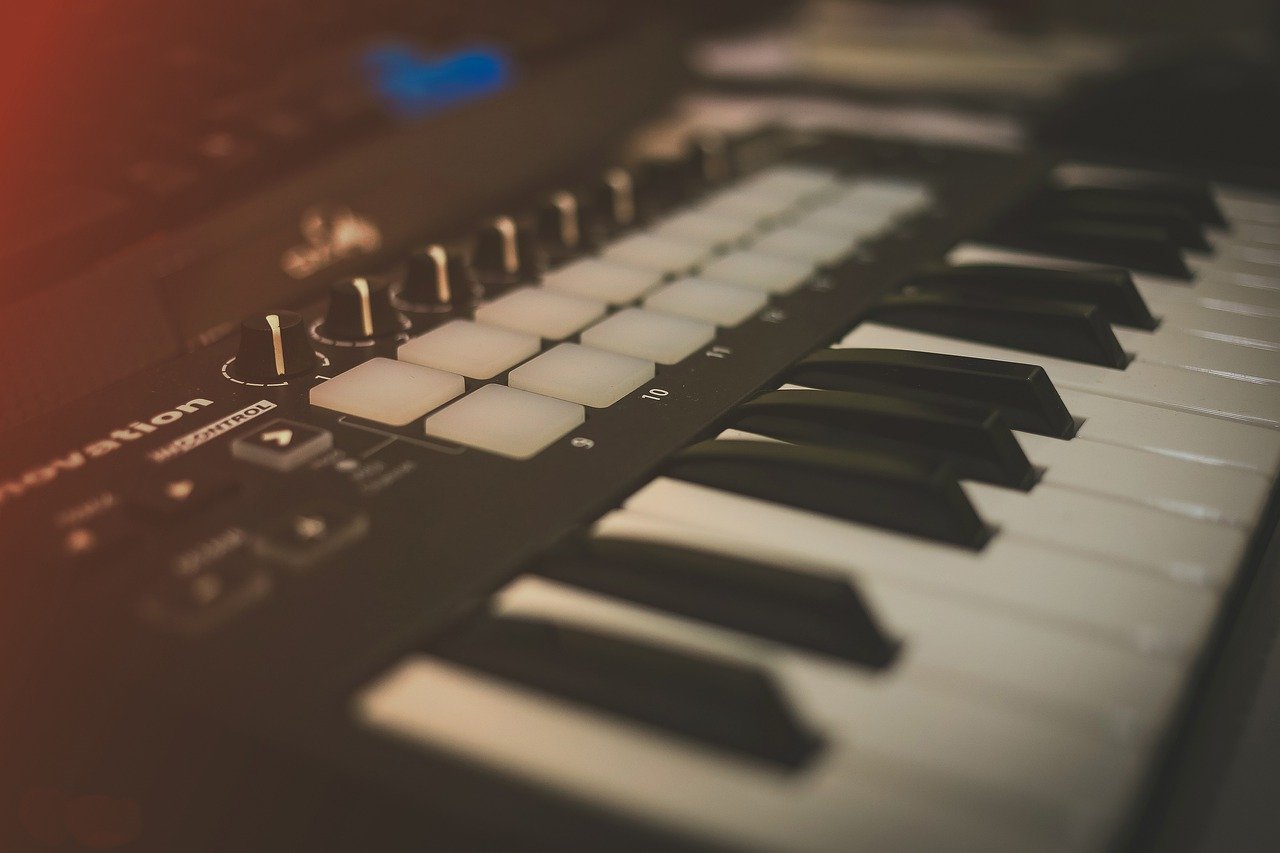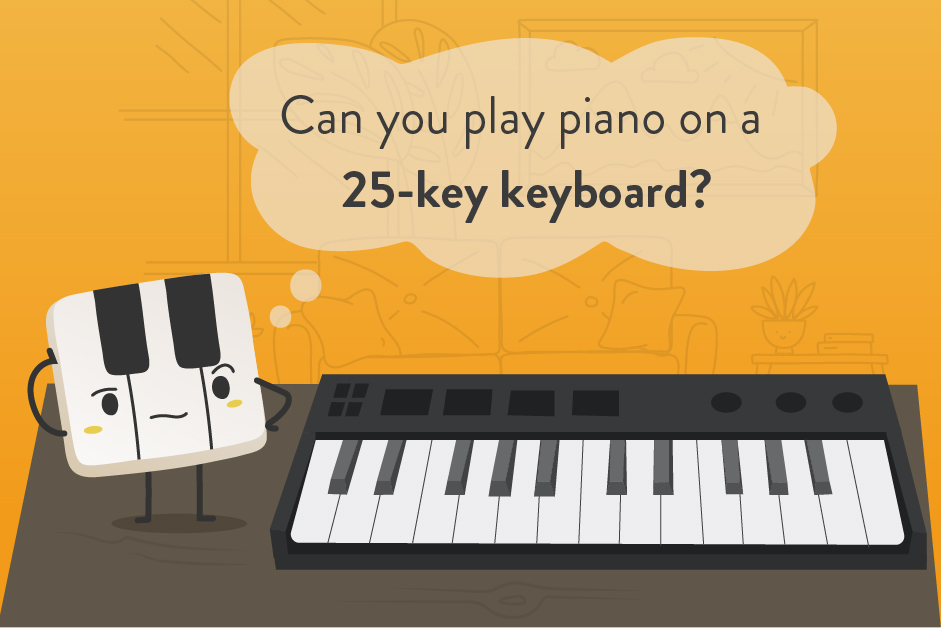Yes, you can use a MIDI keyboard to learn piano. These keyboards offer a range of features suitable for beginners.
A MIDI (Musical Instrument Digital Interface) keyboard serves as a versatile tool in the journey of learning piano. Despite its difference in feel from traditional pianos, it provides learners with the necessary tactile feedback and the option to connect with music software.
The tactile experience, although not identical to an acoustic piano, can be quite effective in teaching basic piano skills. The keys on a MIDI keyboard are typically velocity-sensitive, allowing for expressive practice that mimics the dynamics of a real piano. With a multitude of sounds and learning resources readily accessible, MIDI keyboards create an engaging and interactive learning environment. Their portability and affordability also make them an appealing choice for novices. By integrating technology, MIDI keyboards lay a solid foundation for understanding music theory and piano technique while maintaining a fun and modern approach to education.
The Role Of Midi Keyboards In Music Education
The role of Midi keyboards in music education has become increasingly crucial. Midi keyboards serve as an accessible entry point for beginners to learn music theory, technique, and performance without requiring a traditional acoustic piano. They offer hands-on experience that bridges the gap between theoretical knowledge and practical skills, making music education more engaging and versatile.
Essentials Of Midi Keyboard Functionality
Midi keyboards are powerful tools in a digital music setup. They transmit Midi data to computers or other Midi-equipped devices, allowing for a wide array of sounds and instruments to be played and recorded.
- Touch-sensitive keys: Mimic the dynamics of a piano.
- Range of octaves: Expandable via octave buttons.
- Additional controls: Knobs and sliders for sound manipulation.
- USB or MIDI connectivity: For ease of integration with software.
- Portability: Easy to set up and move around.
Comparing Piano And Midi Keyboard Features
Understanding the similarities and differences between pianos and Midi keyboards is essential for learners.
| Feature | Acoustic Piano | Midi Keyboard |
|---|---|---|
| Keys | 88 weighted keys | 25 to 88 keys, may not be weighted |
| Touch Sensitivity | Dynamic control with each key | Varies, with some offering similar sensitivity |
| Sound Variety | One distinct sound | Access to multiple digital sounds |
| Portability | Stationary and heavy | Lightweight and transportable |
| Cost | Often more expensive | More affordable options available |
| Space | Requires significant room | Compact and space-saving |
Both pianos and Midi keyboards have vital roles in learning and creating music. Yet Midi keyboards offer an accessible and versatile option for beginners.

Credit: pianu.com
Learning Piano Basics On A Midi Keyboard
Diving into the world of piano can be thrilling. A MIDI keyboard offers a convenient starting point. With its compact design and tech features, learning piano basics is within reach.
Grasping Basic Piano Skills Using Midi
MIDI keyboards can be powerful tools for beginners. They provide a foundation to understand musical concepts. Starting your musical journey with a MIDI keyboard has its benefits:
- They are portable and require less space.
- Many models are budget-friendly.
- You can use headphones for silent practice.
- Software programs and apps offer interactive learning.
- Recording and playback features aid in self-evaluation.
- Note range is suitable for learning scales and chords.
Limitations Of Midi Keyboards For Piano Techniques
Despite the benefits, MIDI keyboards have some limitations. As you advance, you may encounter challenges in developing certain skills:
- Weighted keys are rare, affecting dynamic control.
- Key action may not replicate a traditional piano’s.
- Full 88-key span is often lacking for complete octaves.
- Pedal usage is not always possible or realistic.
- Expressiveness and acoustic subtleties might be limited.
- Physical build may not withstand rigorous technique practice.
Integrating Technology With Traditional Learning
Integrating Technology with Traditional Learning brings the best of both worlds into piano education. A MIDI keyboard, often an entry point for beginners, can now bridge the gap between digital practice and acoustic performance. With a variety of tools at your fingertips, learning piano is more accessible and thrilling than ever.
Software And Apps To Aid Piano Learning
Revolutionizing the way we approach piano lessons, several software and apps are available to assist learners. Here’s what technology offers:
- Interactive Lessons: Step-by-step tutorials guide through each lesson.
- Feedback: Real-time inputs on your playing help correct mistakes.
- Progress Tracking: Monitor your improvement with comprehensive analytics.
- Game-like Experience: Fun activities make learning engaging for all ages.
- Extensive Library: Access myriad songs across various genres and difficulties.
Apps such as Simply Piano, Yousician, or Playground Sessions are popular choices to get started. Align your goals with the app that best suits your style!
Transitioning From Midi To Acoustic Piano
Switching to an acoustic piano from a MIDI keyboard? Here’s how to ensure a smooth transition:
- Weighted Keys: Start with a MIDI keyboard with weighted keys to mimic an acoustic piano’s feel.
- Technique Focused: Concentrate on finger strength and posture, crucial for acoustic play.
- Ear Training: Use your MIDI to develop a good ear, vital for interpreting acoustic sound.
- Piece Complexity: Progressively approach more complex pieces to build confidence.
- Tactile Adjustment: Regularly practice on an acoustic piano to get used to its unique response.
Remember, patience and practice are key. Your skills on a MIDI can certainly transfer to an acoustic piano with the right approach and time.
Practical Tips For Effective Practice
Welcome to the ‘Practical Tips for Effective Practice’ section, where we delve into strategies for using your MIDI keyboard to learn piano skills. With the right approach, you can transform your MIDI keyboard into an excellent learning tool. Let’s explore some tips to make the most of your practice sessions.
Optimizing Midi Keyboard Settings For Learning
Getting the most out of your MIDI keyboard starts with setting it up properly. Aim for a realistic piano experience to build finger strength and technique. Here are steps to optimize your keyboard:
- Select weighted keys if your model has them, for a feel closer to an acoustic piano.
- Adjust the sensitivity to match your playing dynamics.
- Use a sustain pedal to practice pedal techniques.
- Set the octave range to simulate a standard 88-key piano.
Practice Routines With Midi Keyboards
Building a practice routine is key for steady progress. Here’s how you can create an effective routine:
- Start with warm-up exercises like scales and arpeggios.
- Include ear training to improve musical recognition.
- Progress to chord progression practice.
- Work on song sections rather than whole pieces.
- Record and playback your sessions to self-critique.
Remember, consistency matters more than duration. Short, daily sessions yield better results than occasional long practices.
Success Stories And Testimonials
Dreams of playing piano can come true with a MIDI keyboard. Many people start with MIDI keyboards. They share exciting stories. Their testimonials inspire others.
Case Studies Of Learning Piano On Midi Keyboards
Inspiring success flows from MIDI keyboard learners. These case studies show progress and achievement. Let’s explore real-life journeys.
- John’s Journey: Without a piano, John bought a MIDI keyboard. He practiced daily. In one year, John played advanced pieces.
- Lisa’s Leap: Lisa, a mother of two, chose a MIDI keyboard. Her kids followed. Soon, they played duets together.
- Tom’s Transition: From guitar to piano, Tom used a MIDI keyboard. He found the transition smooth. Now he composes his own songs.
Expert Opinions On Midi Keyboards For Education
Educators and piano experts often recommend MIDI keyboards. They create a strong foundation for learners. Some expert opinions include:
| Expert | Opinion |
|---|---|
| Professor Smith | MIDI keyboards give students an affordable start. |
| Dr. Lee | They help understand musical concepts easily. |
| Ms. Rivera | MIDI keyboards integrate well with teaching software. |
These experts highlight MIDI keyboards’ benefits. Students gain skills for future piano endeavors.

Credit: pianu.com

Credit: www.hoffmanacademy.com
Can I Use a Midi Keyboard to Learn the Differences Between a Piano and a Keyboard?
Yes, you can use a midi keyboard to learn the difference between a piano and a keyboard. The main difference between piano keyboard is the action. The piano has weighted keys, while most keyboards have non-weighted or semi-weighted keys. This affects the feel and touch of the keys, as well as the overall playing experience.
Frequently Asked Questions Of Can I Use Midi Keyboard To Learn Piano
Can I Practice Piano With A Midi?
Yes, you can practice piano using a MIDI keyboard which simulates piano keys and can connect to learning software.
Can A Beginner Use Midi Keyboard?
Yes, beginners can easily use MIDI keyboards as they are user-friendly and designed for all skill levels, including novices.
Can You Use A Midi Keyboard Without Knowing How Do You Play Piano?
Yes, you can use a MIDI keyboard without piano skills. MIDI devices often pair with software that simplifies music creation, suitable for beginners.
Can I Learn Piano On A 49 Key Midi Keyboard?
Yes, you can learn piano on a 49 key MIDI keyboard, although it has fewer octaves than a standard 88-key piano. It’s suitable for beginners to understand basics and practice simple pieces.
Conclusion
Embracing a MIDI keyboard for piano learning opens up a world of possibilities. It’s an affordable, versatile tool that suits beginners and seasoned players alike. Dive into the journey of music with confidence, knowing a MIDI keyboard can guide your path.
Start practicing, and let your creativity soar.
